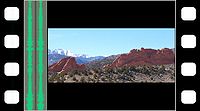
Photo from wikipedia
Automatically waste sorting is usually resorted to robot arm to grasp solid waste. However, the solid waste is prone to being stacked up, and they are difficult to segment and… Click to show full abstract
Automatically waste sorting is usually resorted to robot arm to grasp solid waste. However, the solid waste is prone to being stacked up, and they are difficult to segment and consequently to be grasped. To resolve this problem, we present a novel spatial adaptive projection method based on only one RGB-D sensor to accurately segment the piled solid waste. Through the RGB-D sensor, the point cloud of waste is obtained firstly. Then it will be projected into different planes to get an optimized image which is easy to be segmented. The projection parameters are automatically computed based on a mathematical optimization framework. After segmenting stacked waste into several isolated objects, we re-project them into the point cloud. We evaluate the effectiveness and accuracy of our method in a large dataset of stacked solid waste, the results shows the performance of the proposed method is satisfactory.
Journal Title: Neurocomputing
Year Published: 2019
Link to full text (if available)
Share on Social Media: Sign Up to like & get
recommendations!